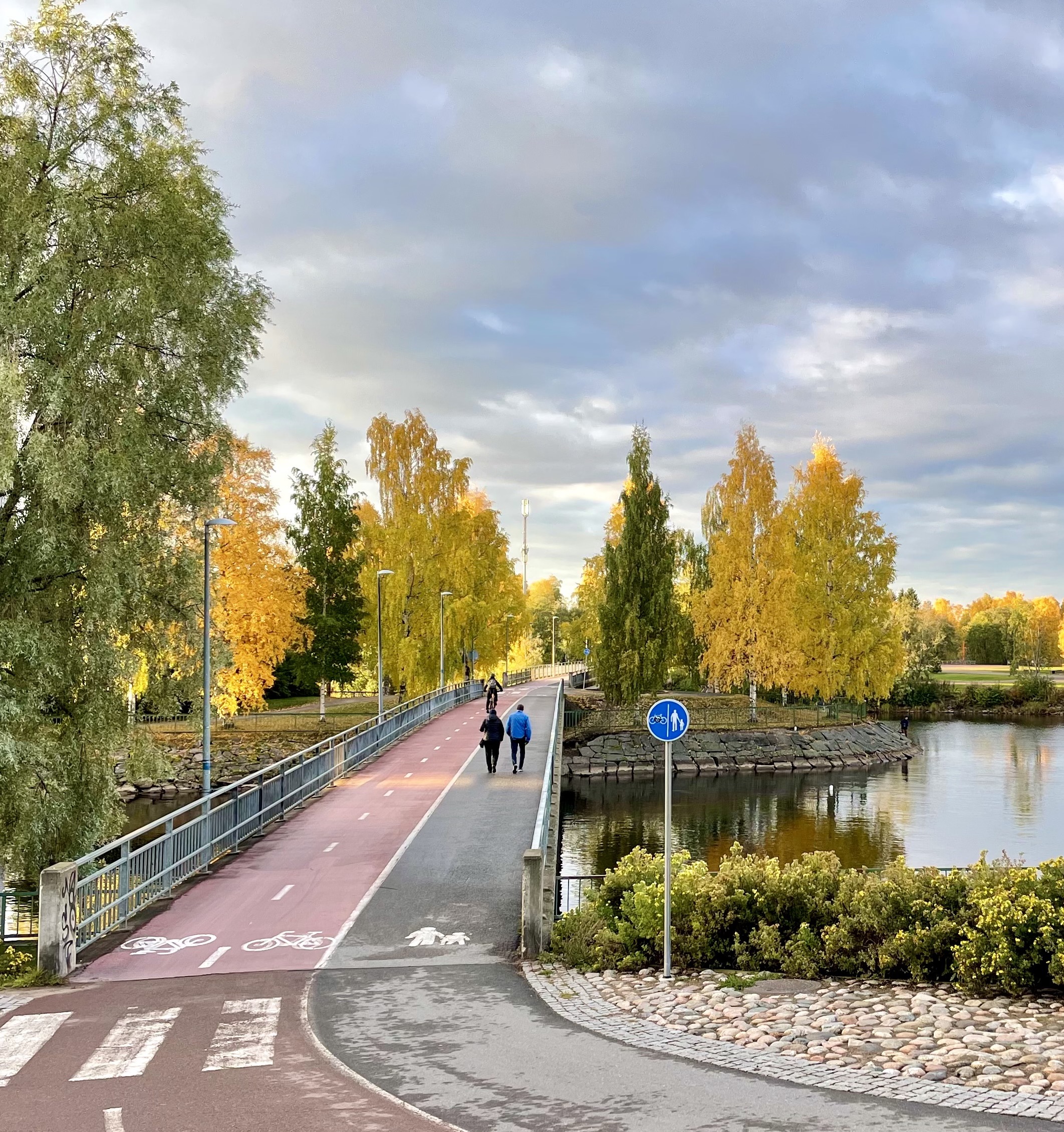This autumn, 26,000 residents of Oulu, Espoo, and Lahti will receive personal invitations to participate in our survey, which explores habits, opportunities, and preferences related to everyday mobility. Utilizing public participation GIS methods (PPGIS, discussed in a previous blog post), we ask participants to pinpoint the locations they visit in their everyday lives, specify the frequency of these visits and the modes of transportation they use for specific trips. Additionally, we incorporate a set of Likert’s scale questions to observe respondents’ preferences and opinions on mobility and their living environment. Together with background information, these data will be used to profile distinct lifestyle groups through statistical analysis.
Secondly, based on the GIS data, we can produce an activity space model, which helps us to understand how citizens engage with their daily environment on an aggregate level. While activity spaces typically develop around home locations, they can often be multi-centered (Hasanzadeh et al., 2021). In our study, we will utilize this data to explore potential associations with lifestyle preferences and activity spaces.
Social practice theory as a research framework
As we gain more insight on different lifestyle profiles and their interactions with the environment, we can begin to consider the possible points of intervention. In which social groups lies the potential for transforming mobility lifestyles to be more sustainable?
Research on mobility sustainability transitions has traditionally focused on technological solutions and individual behavior changes. Nevertheless, these perspectives often overlook the significance of the social sphere. Practice theories enable us to examine mobility behavior through the broader socio-cultural context (Heissner & Rau, 2017).
The concept of a practice is somewhat tricky. In the field of social sciences, it is defined as routinized behaviour, which consists of different elements, and it cannot be reduced into any single of these element (Reckwitz, 2002). According to the work of Shove et al. (2012), these elements are categorized into three main types: materials, meanings, and competences. For instance, driving a car involves materials (the vehicle and the infrastructure, including streets and signs), meanings (such as the freedom to move, fast accessibility, driving is effortless and even romantic), and competences (knowledge of traffic rules and the ability to operate a vehicle).
Some practices recruit people more effectively while others struggle to survive. Consequently, we are interested in exploring how individuals become carriers of specific social practices, how these practices recruit individuals, and which social groups are targeted (Blue et al., 2016). Within the context of our study, we may be interested, for example, about the reasons why driving car is so dominant mode of transport, and how we could increase the attractiveness of active mobility over driving.
In WP2, our objective is to comprehensively investigate lifestyles and the underlying socio-cultural elements. Later this year, we anticipate having robust data available for these purposes.
Photo credit: Joel Vuolle
References:
Blue, S. et al. (2016) ‘Theories of practice and public health: understanding (un)healthy practices’, Critical Public Health, 26(1), pp. 36–50. Available at: https://doi.org/10.1080/09581596.2014.980396.
Hasanzadeh, K. et al. (2021) ‘Centricity and multi-locality of activity spaces: The varying ways young and old adults use neighborhoods and extra-neighborhood spaces in Helsinki Metropolitan Area’, Cities, 110, p. 103062. Available at: https://doi.org/10.1016/j.cities.2020.103062.
Reckwitz, A. (2002) ‘Toward a Theory of Social Practices: A Development in Culturalist Theorizing’, European Journal of Social Theory, 5(2), pp. 243–263. Available at: https://doi.org/10.1177/13684310222225432.




